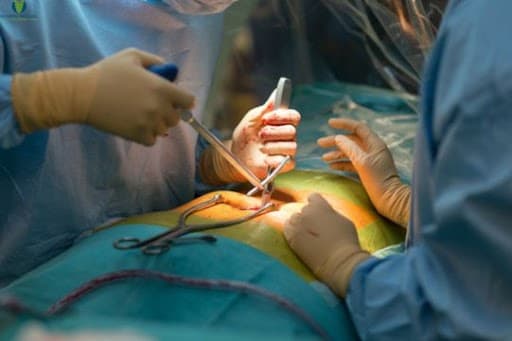
An Overview of Common Surgical Spine Procedures
The spinal cord is an important and sensitive part of our body. It holds our body in such a way that it can work appropriately.
The spinal cord is an important and sensitive part of our body. It holds our body in such a way that it can work appropriately in proper coordination with the nervous, skeletal, and endocrine systems. A little damage to any of its parts may lead to complete dysfunction of the body. Numerous treatments are available worldwide to deal with its deformities, and people always want to know more about them. In this blog, we will give an overview of the common surgical spine procedures along with their instruments.
The spinal cord is divided into three major regions based on its location: the thoracic, lumbar, and cervical. Similarly, it is categorized into three types of surgical spine procedures. These are:
- Cervical spine procedures
- Thoracic spine procedures
- Lumbar spine procedures
The most common procedures, along with their instruments, that fall into these categories are:
-
Discectomy: It is a procedure that is used to remove surgically herniated or deformed portions of a spinal disc. It gives relief from pain, weakness, and numbness in the back. The spine surgical instruments used for this purpose are scalpels and forceps.
-
Corpectomy: It is used to treat spine instability due to injuries, fractures, infections, etc. It removes the affected intervertebral disc or soft tissues through surgery.
-
Decompression: is a general term used to relieve pressure on the spinal cord or nerves that may be due to several reasons, such as herniated discs, spinal stenosis, or spinal tumors.
It commonly includes the following methods:
- Laminectomy: To remove the lamina, which is the back part of the vertebra, to provide more space within the spinal canal. It is used to treat spinal stenosis.
- Discectomy: As discussed before, this surgery involves removing a portion of a deformed spinal disc to relieve pressure on the nerves. It involves diseases like sciatica.
- Foraminotomy: In this procedure, the surgeon widens the neural foramen to alleviate pressure on the nerves caused by stenosis or a herniated disc.
- Corpectomy: As mentioned earlier, it removes the vertebral body and treats spinal infections, tumors, or injuries.
-
Laminoplasty: Laminoplasty is used to treat cervical spinal stenosis. It’s an alternative to laminectomy; instead of removing the lamina, a small incision is made in the back of the neck through one side of the lamina, forming a hinge. It widens the spinal canal without removing the entire lamina. After creating the hinge, bone grafts or metal hardware may be inserted to hold it.
-
Laminectomy: Laminectomy is used to remove the lamina, which is a portion of vertebral bone, to relieve pressure on the spinal cord, commonly for conditions such as spinal stenosis, herniated discs, or spinal tumors that cause compression of the spinal cord.
-
Laminotomy: In laminotomy, a small opening is made in the lamina to reduce pressure on the spinal cord. It takes less time and is less expensive than laminectomy. After the surgery, the tissues are repositioned and closed with sutures and staples. Physical therapy is often recommended by the doctor for a fast recovery.
-
Anterior or posterior spinal fusion: It is used to treat the instability in the spinal cord due to any reason, as discussed earlier. It involves the fusion of two or more vertebrae. The spine surgery instruments used for this purpose are forceps and curettes.
It can be performed from both the anterior and posterior ends of the body.
- Anterior spinal fusion: In anterior fusion, the surgeon accesses the spine through the chest and neck sides and then removes the deformed discs and replaces them with a bone graft or metal plate.
- Posterior spinal fusion: In posterior fusion, the surgeon cuts the body from the backside and removes or replaces the affected part.
-
Replacement: It involves the replacement of a damaged disc with an artificial or implanted one. It is also known as disc replacement surgery or total disc arthroplasty. It is considered an alternative to spinal fusion surgery because it limits flexibility and motion in the spine.
-
Microdiscectomy: It is specifically used to treat spinal injuries in the lumbar region. Sometimes, a microscope is used to find the exact location of an infection. However, the remaining procedures are the same as the ones discussed above.
-
Pars repair: It is also known as pars interarticularis repair or spondylolysis repair, in which the small bony bridge that connects the facet joints to the back of the spine is fractured or deformed.
-
Osteotomies: Osteotomies involve the cutting and reshaping of bones. Concerning spinal surgery, osteotomies are performed to diagnose spinal injuries and fractures. The spine surgical instruments used for this purpose are osteotomes and retractors.
It has many forms:
- Pedicle subtraction osteotomy (PSO).
- Smith-Petersen osteotomy (SPO).
- Ponticelli osteotomy.
- Lateral column lengthening osteotomy.
- Anterior column realignment (ACR) osteotomy.
- Synovial cyst excision: Synovial cyst excision is a surgical procedure that removes fluid-filled sacs known as synovial cysts near the facet joints of the spine, resulting in inflammation in the joints.
Conclusion:
Surgical spine procedures are numerous. The sensitivity of the spine is always taken into consideration before the application of a procedure. Some alternative methods are also available, depending on the severity of the illness. Emerging technology has led to the invention of new, helpful processes.
Please visit our website Dynamic Medical Solutions for more information.
